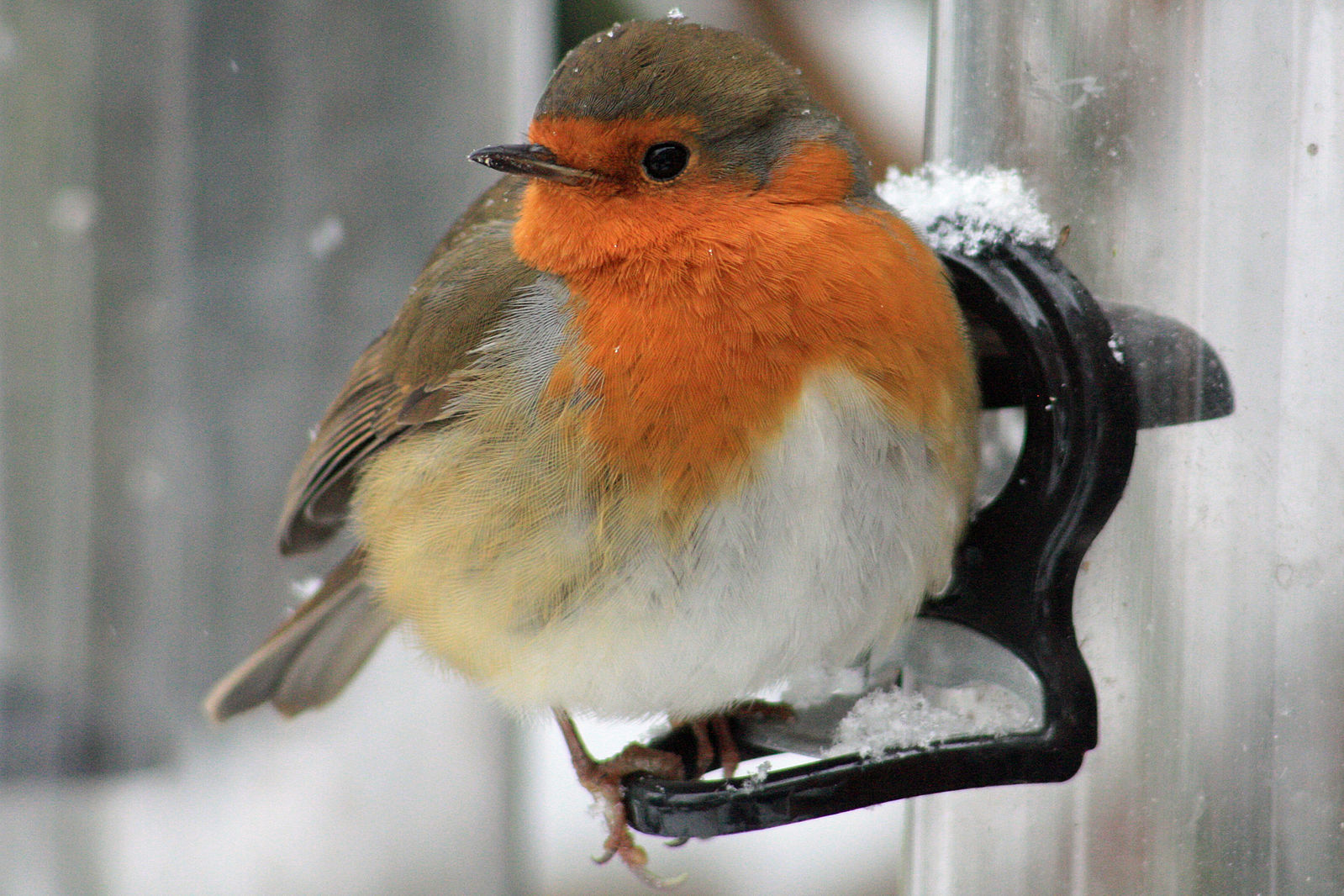The Secret Life of The Robin
Robins must be one of the most familiar birds in the UK and at Christmas time they seem to be everywhere- on cards, on decorations and in miniature models on cakes. You may even notice a real one looking at you through the window! Their association with Christmas dates back to Victorian times, when postmen wore vivid red uniforms and became known as ‘robins’ due to their similarity with this garden bird. It was these human ‘robins’ that delivered the cards at Christmas time and it wasn’t long before artists began to depict the birds themselves on the cards, often with a letter being held in the bill or a post box also in the picture.
Have you ever looked at a real robin and noticed how his or her ‘red’ breast is more orange than red? In artwork robins are often given redder breasts than in reality too. Well, until the 1600’s when merchants began to import oranges into the UK, we didn’t have a name for the colour orange and so robins were described as red. When exotic fruit entered our economy, the word orange was invented to describe the fruit but by then, ‘robin redbreast’ had already entered our vocabulary.
Research by organisations such as the BTO reveal that most robins never travel more than 5km from where they hatched, but some do migrate in winter into the UK from countries in Scandinavia, Eastern Europe and Russia. They do this mainly to escape very low temperatures, or snowfall, that affects their food supply and ability to survive. They arrive with other species such as redwings, fieldfares, blackbirds and chaffinches. In the UK we are relatively mild in climate compared to countries to the east of us, because we are usually warmed by the Gulf Stream, a ribbon of warm ocean current that originates in the Gulf of Mexico and traverses the Atlantic Ocean. Although we are at the same latitude as a lot of eastern Europe, we are warmer, on average. The birds have evolved the urge to fly west and seek out the UK if times get hard where they are.
On the other hand, some of our summer robins leave the UK and travel further south to Spain and other southern European countries for winter- and research shows these are mainly females. Interestingly, on the continent robins tend to be very shy, reclusive woodland birds and do not share the boldness and confidence of our UK robins. Seeing them in the garden and at close quarters is a novelty which is quite unique to the UK. It is thought their habit of ‘following’ gardeners around and looking for worms and insects in earth that has been worked is an adaptation for survival in the UK. Because mammals like wild boar are no longer widespread in the UK, the robin can no longer often follow a boar around as it forages the woodland floor, turning over soil with snout and trotters, so robins have ‘learnt’ to follow us instead. European bison or wild ponies, such as Koniks, would have similar usefulness for robins too when they encounter them in the forest. It is thought that this habit is why robins can, with patience, become accustomed in the UK to feeding from a human hand.
I hope this has been an interesting read and has revealed a little more about these beautiful birds. Look out for an article in the Spring covering their unusual breeding behaviour- there is more to robins than meets the eye!
As a final note- thank you to those who have read these articles from RSPB Lakenheath Fen in 2021- I have loved writing them and I hope you have enjoyed reading them. I hope you all had a very Happy Christmas. We hope in 2022 to continue to provide an enjoyable and positive environment for visitors to come and enjoy being close to nature.
With best wishes,
Heidi Jones (Visitor Experience Officer, RSPB Lakenheath Fen).
Image Credit: Si Griffiths, CC BY-SA 3.0 https://creativecommons.org/licenses/by-sa/3.0, via Wikimedia Commons

